Flatbed Variety
Topic 4373 | Page 80
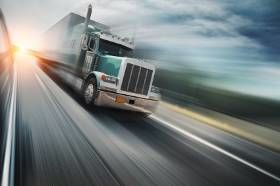
Thanks for the info my lowboy is an attachment for a 4th axle never needed it and the rear axle does lift now the old lowboy I have doesn't. I imagined it was similar in that was you torn the trailer enough that front axle just wants to hop around.
Question if anyone knows is a spread Axle flatbed any harder to pull/back than a triple axle lowboy (53ft).
You can turn the lowboy easier. With that said, they are not all that hard. Our 53' quad is easier to maneuver than the spread axle 48'. The rear axle does lift. I pull probably the largest variety of trailers of anyone on here. We have tandem axle dovetails, 2/3/8 and 9 axle lowboys, quad axle 53' flatbeds, 3 axle 53' stepdeck , 48' spread axle flatbeds and stepdecks and tandem axle 40' flatbeds that stretch to 68'. None of them are overly difficult. Different yes but not hard.
Tandem:
Tandem Axles
A set of axles spaced close together, legally defined as more than 40 and less than 96 inches apart by the USDOT. Drivers tend to refer to the tandem axles on their trailer as just "tandems". You might hear a driver say, "I'm 400 pounds overweight on my tandems", referring to his trailer tandems, not his tractor tandems. Tractor tandems are generally just referred to as "drives" which is short for "drive axles".
Stepdeck:
A stepdeck , also referred to as "dropdeck", is a type of flatbed trailer that has one built in step to the deck to provide the capabilities of loading higher dimensional freight on the lower deck.

Finally remembered to take a picture of a load, scissor lifts and one boom unit.
I knew other flatbed drivers were on this site...

Got to move a couple of pieces today.
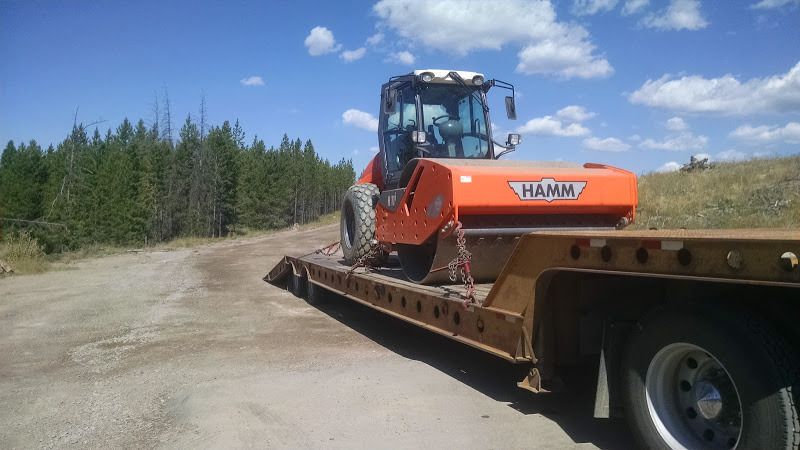


Pat, your pics are making me want to move up to heavy haul in a couple years. Need some good flatbed exp first, I would think.
Pigs aren't just for the barnyard anymore. Have you ever heard of hauling pigs on a flat-bed? Well they're a little trouble when you go to try and strap theme down, but it can be done...
Okay, all jesting aside, I did haul a load of "sows" last week, only these "sows" have nothing to do with bacon or chops. These pieces of aluminum, called "sows" for some reason, were picked up at a River port as part of a back haul load for me to work me back to the SAPA plant in Delhi, LA. I delivered them to the plant. Sometimes my back haul loads actually deliver right to the plant where I will be picking up my next load. When you look at the photo notice that they are not stacked on pallets. The shape that they are forged into allows the forks on a fork lift to slip underneath them on either side of a "belly" that descends lower than the rest of the product. That belly may be where the name "sow" comes from, but I am not sure about that. These things are not real stable, so you have to make sure of three things:
1) You've got them tied down well.
2) Stop every 100 miles or so and tighten up your straps. They will loosen up as you travel due to the sows moving around from road vibrations.
3) Have adequate edge protection for your straps. Due to the rough edge on these things from the way they are forged, along with their proclivity to "walk" around as you're driving, they will cut right through your straps. You sure don't want to drop a bunch of "sows" on the interstate.
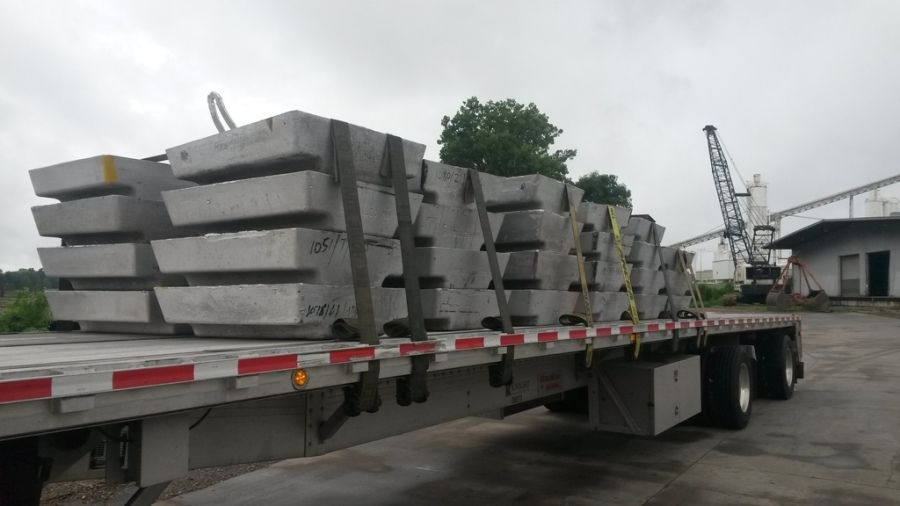
You probably can't see my edge protection for my straps in the photo, but I like to take an old strap that needs to be put out of service due to the wear and tear on it and cut it up into 18" to 24" long pieces which are then placed underneath my straps and that makes for some great edge protectors. I know I sound like a miser, but economics is not behind this choice. I've shared this tip in this thread before - those strips of old strap do a great job, and are really ideal on unusual shaped edges where the plastic ones don't conform to the shape of your freight. It seems logical to wonder why these strips of old strap material would not get cut if your actual strap would, and that is a good question. The reason they don't get cut is that they are not stretched tight like the strap that is holding the load. It is the tension on the strap that makes it vulnerable to laceration. In my opinion, this product should be tied down with chains, but on this dedicated account I'm on they don't allow us to have chains on our flat bed trucks. They are concerned that some of us might use their chains on the finished products we haul, thereby damaging or scarring it in transit. So, we work with what we have. Here is a closer look at the edge protection for the straps on this load.
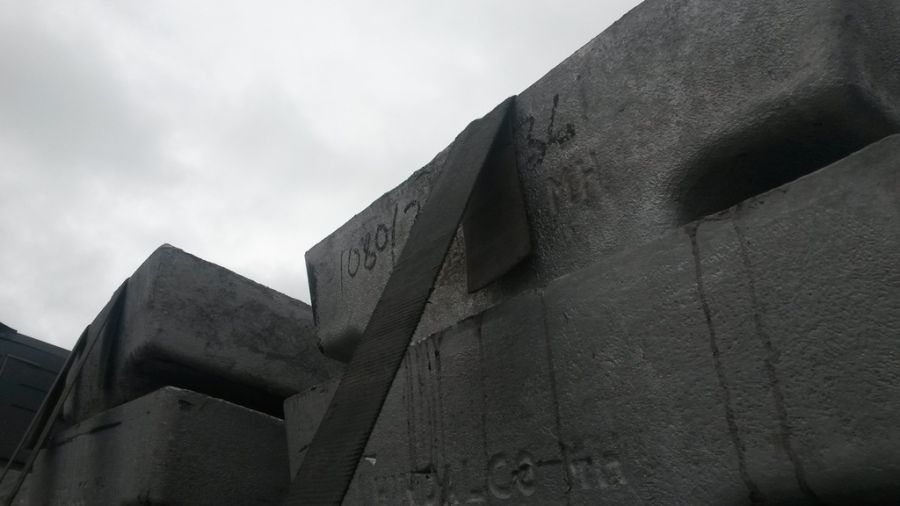
I've never been asked to haul any "boars" yet, but I guess you could have called this monstrosity a "boar." You'll notice the chains on it, but I did not haul this thing while working on this account. This is an older photo of a large ingot of aluminum that I hauled back in the day when I was a "real flat-bedder" at Western Express.
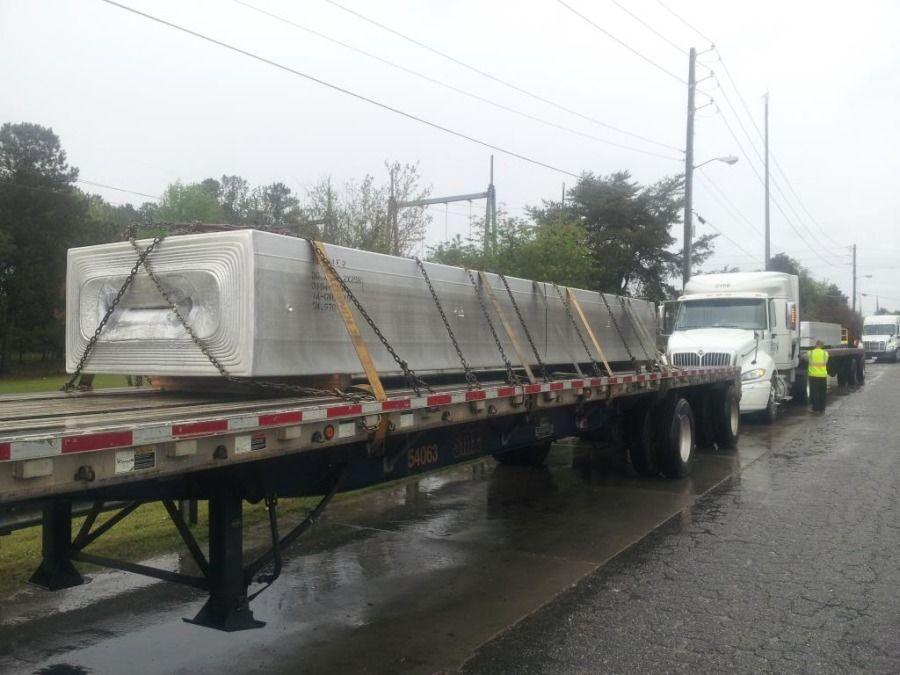
I'm all over the place in this post, but I thought you might like to see a tarping technique that you might want to try sometime. Flat-bedders call it a "beaver tail."
When you have a load with varying lengths at the rear of the load it is hard to fold your flap down at the back and close it all up nice and neat. Then when you do close it up the wind gets in there and it causes a "parachuting" effect which in a worst case scenario can pull your whole rear tarp off and send it sailing. Yes, I know about this from bitter experience!
See this load. Notice how it is varying lengths at the rear.

Here's a shot of the "beaver tail." It still protects your product from the elements, and it allows the wind to escape without taking your tarp with it.
SAP:
Substance Abuse Professional
The Substance Abuse Professional (SAP) is a person who evaluates employees who have violated a DOT drug and alcohol program regulation and makes recommendations concerning education, treatment, follow-up testing, and aftercare.
Interstate:
Commercial trade, business, movement of goods or money, or transportation from one state to another, regulated by the Federal Department Of Transportation (DOT).
HOS:
Hours Of Service
HOS refers to the logbook hours of service regulations.OOS:
When a violation by either a driver or company is confirmed, an out-of-service order removes either the driver or the vehicle from the roadway until the violation is corrected.
Oops, I hit the wrong button - Here's that "Beaver Tail."
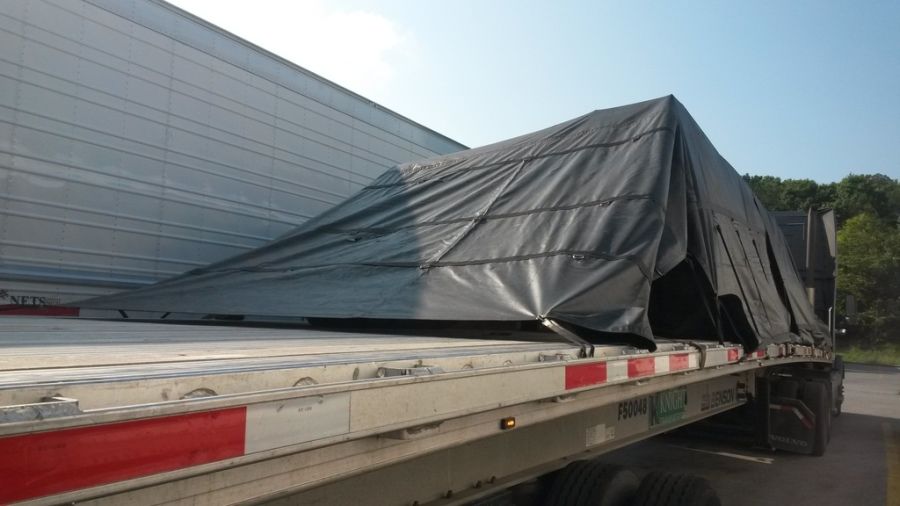
Here's an example of a recent load where I employed a "beaver tail" on both the front and rear of the load. If you have a short load and you don't want to take all that time of folding up the flap in the front and rear of the load you just stretch it out like this photo and it will ride just fine as it goes down the road.
Oh man, I can't seem to get this straight today. Here we go again with the "beaver tails."
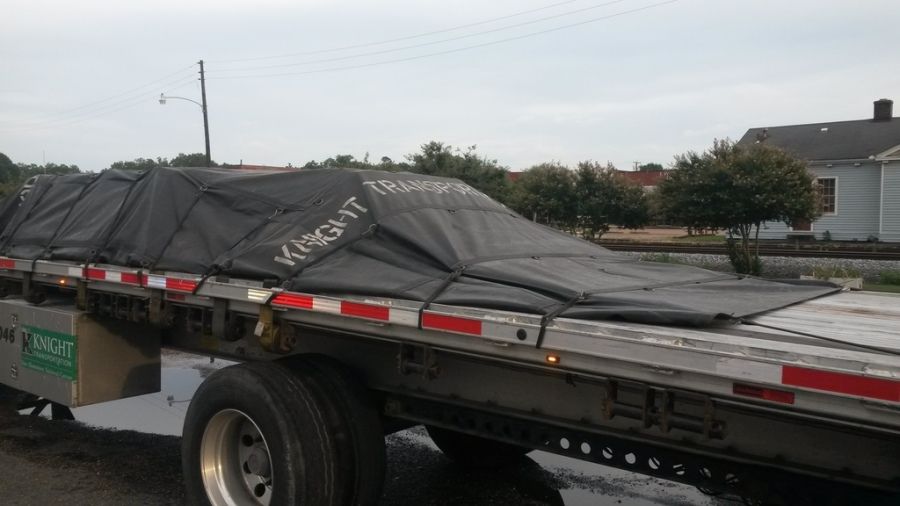
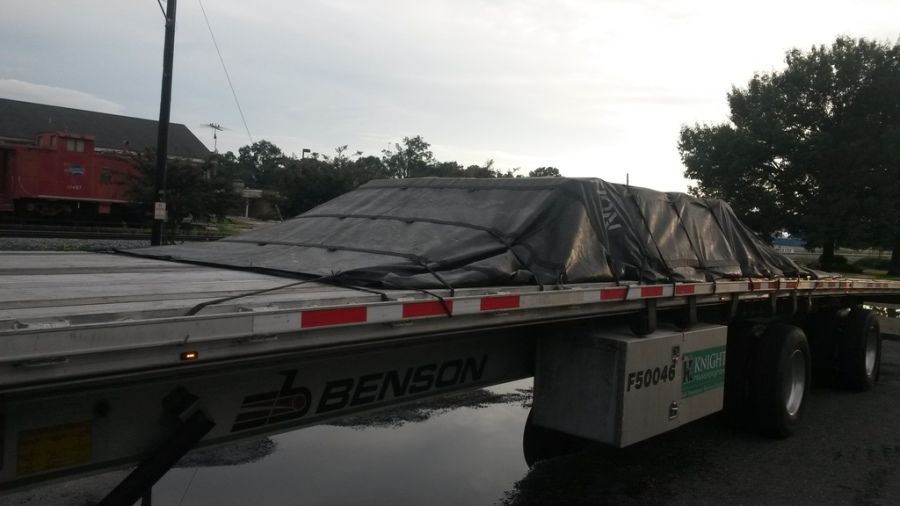

Oh man, I can't seem to get this straight today. Here we go again with the "beaver tails."
You should call that the "Platypus Wrap" duck bill in the front and beaver tail in the back.....
See, looks just like your tarp...
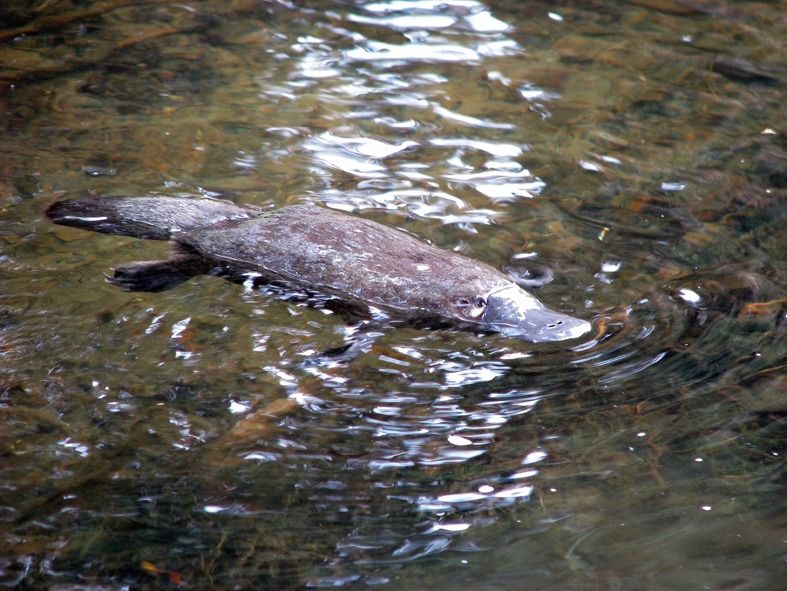
HaHa! I like that - "The Platypus Wrap"
Wait a minute, wasn't that a hit rap song by Snoop Dog? 
I heard someone say something about the D.O.T. wrap one time. I think that one goes like this:
The D.O.T. they watching you, Better get it right better get it true. They want that load to be just right. You gotta keep them chains and straps real tight.
If that load shift, you gonna be adrift, They gonna shut you down, so you just hangin' round, At the chicken coop, eating cold canned soup.
Yo baby Momma gonna have to go Get some pawn shop money so they'll let you roll. If you can't pay that fine like it sounded, They'll take your truck to be impounded.
Don't try to fight it, don't get excited, Just say yes Suh, I knows your right, Give the man yo money, don't try to act funny.
Yeah, the D.O.T. they watching you, They watching me, they going to pursue All them loads that are shifting from side to side, You can run and run, but you can't run and hide!
That's some "Old School" rap!
New Reply:
New! Check out our help videos for a better understanding of our forum features

















Preview:
This topic has the following tags:
Advice For New Truck Drivers Choosing A Trucking Company Flatbed Hard Lessons Learned Load Securement Photos Truck Driving Stories






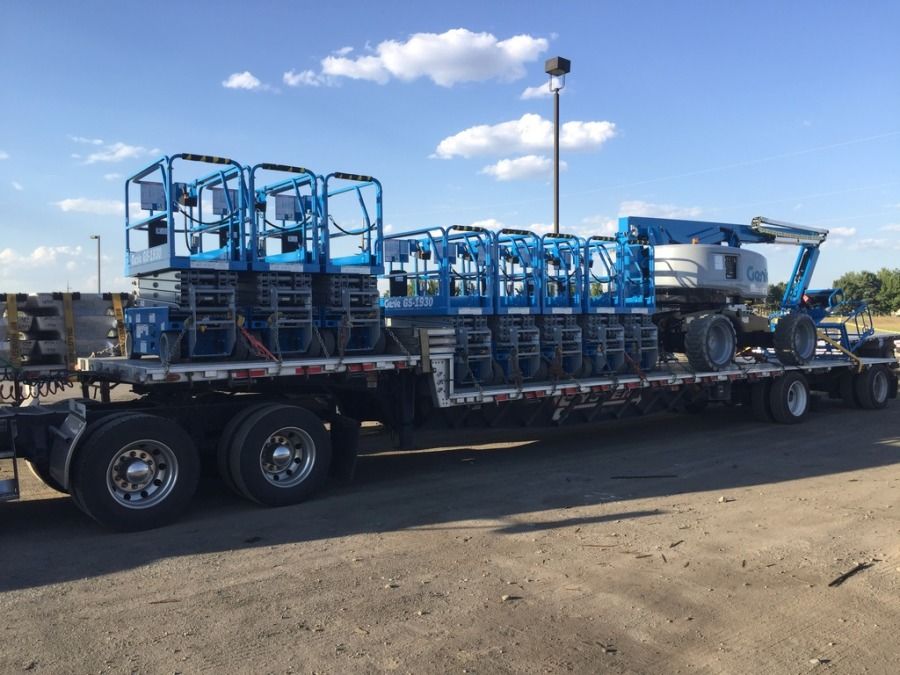

 TT On Facebook
TT On Facebook
Finally remembered to take a picture of a load, scissor lifts and one boom unit.